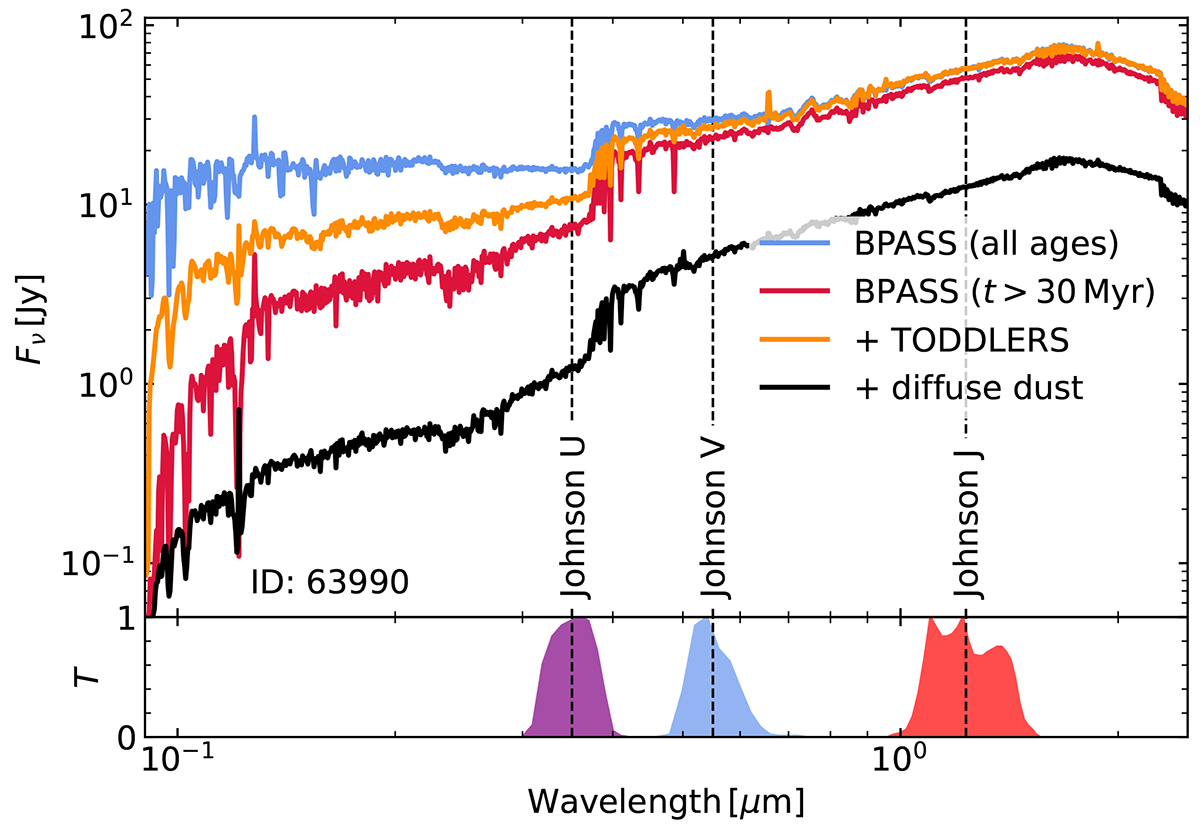Fig. 1.

Download original image
Rest-frame SED for an example TNG100 galaxy at z = 2 (subhalo ID: 63990, M⋆ ≈ 1011.2 M⊙, SFR ≈ 140 M⊙yr−1), recorded at a distance of 10 Mpc. The blue line indicates the dust-free SED, i.e., using BPASS for all stellar populations and neglecting the diffuse dust in the ISM. Using only the evolved stellar populations (with ages above 30 Myr) leads to the red SED. The addition of younger stellar populations with TODDLERS templates (which incorporate unresolved dust) gives rise to the orange spectrum. Adding diffuse dust to this orange SED then leads to the final dust-attenuated SED shown in black. The lower panel indicates the (arbitrarily normalized) transmission curves for the Johnson UVJ broadband filters.
Current usage metrics show cumulative count of Article Views (full-text article views including HTML views, PDF and ePub downloads, according to the available data) and Abstracts Views on Vision4Press platform.
Data correspond to usage on the plateform after 2015. The current usage metrics is available 48-96 hours after online publication and is updated daily on week days.
Initial download of the metrics may take a while.


